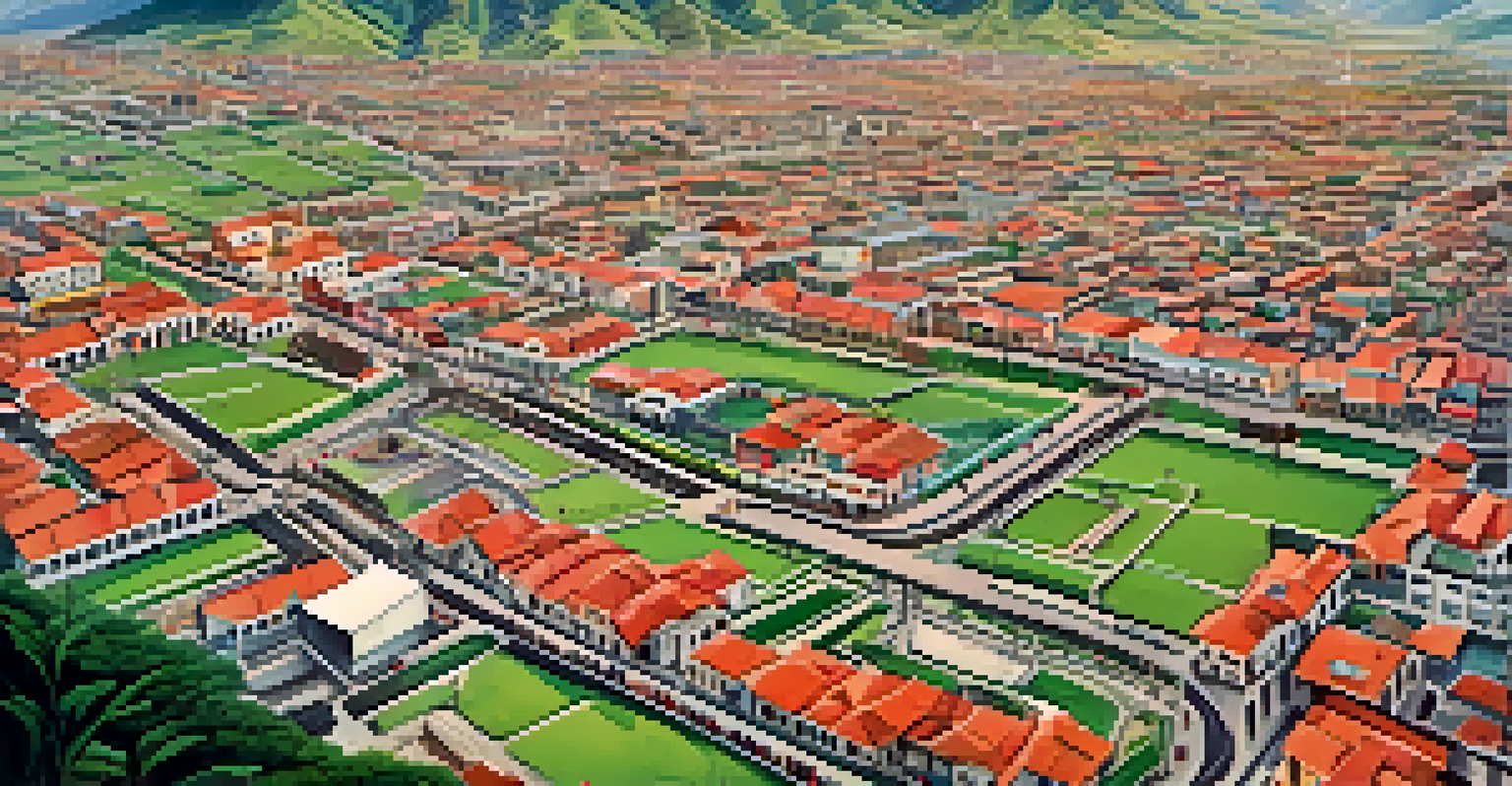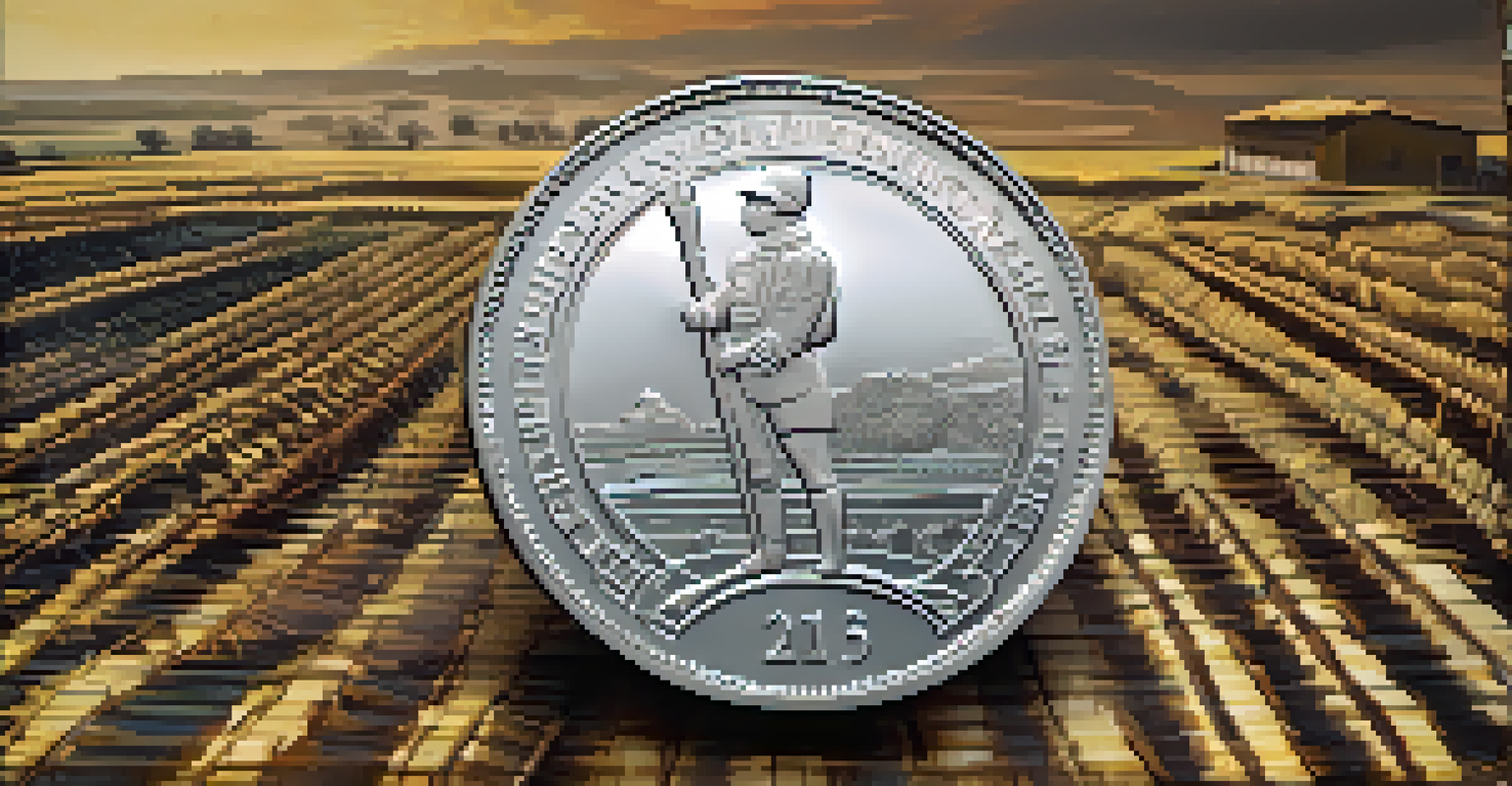Manuel A. Odría: The Dictatorship and Economic Growth

Introduction to Manuel A. Odría's Leadership
Manuel A. Odría was a prominent figure in Peru's history, known for his military rule from 1948 to 1956. His presidency began after a coup, and he quickly established a regime that prioritized stability and economic growth. Understanding Odría's leadership style is crucial to grasping the complexities of his era, as he balanced authoritarianism with populist policies.
In the long run, the sharpest weapon of all is a kind and gentle spirit.
During his time in power, Odría presented himself as a champion of the people, often engaging in public works and social programs that resonated with the masses. However, his methods were often heavy-handed, utilizing censorship and repression to quash dissent. This mix of populism and authoritarianism created a unique political landscape in Peru.
By examining Odría's leadership, we can better understand the dualities of governance during his regime—how it fostered both economic progress and societal unrest.
The Economic Policies Under Odría's Regime
Odría's government implemented a series of economic policies aimed at modernizing Peru's economy. One of his key strategies was promoting industrialization through import substitution, which encouraged local production by reducing dependency on foreign goods. This approach aimed to stimulate the national economy and create jobs.

Additionally, Odría invested in infrastructure projects that included building roads, schools, and hospitals, which not only improved public services but also fostered economic activity. These initiatives were crucial in laying the groundwork for future growth. The government also provided support for agriculture, further diversifying the economy.
Odría's Populism and Authoritarianism
Manuel A. Odría's leadership combined populist policies with authoritarian control, creating a political landscape marked by both economic growth and societal unrest.
While these policies led to significant economic growth, they were often accompanied by political repression, leading to a complex legacy that continues to be debated by historians and economists alike.
Impact of Foreign Investment During Odría's Rule
Foreign investment played a pivotal role in Odría's economic strategy. The regime sought to attract foreign capital by offering incentives, such as tax breaks and favorable contracts, especially in the mining sector. This influx of investment was critical in bolstering Peru's economy, as the country was rich in natural resources.
The greatest danger in times of turbulence is not the turbulence—it is to act with yesterday's logic.
However, this dependence on foreign investment raised concerns about national sovereignty and the potential exploitation of resources. Many Peruvians questioned whether the benefits of foreign capital were being equitably distributed among the population or primarily enriching foreign firms.
The relationship between the government and foreign investors illustrates the delicate balance Odría sought to maintain—promoting economic growth while managing domestic discontent.
Social Programs and Their Economic Justifications
Odría's regime implemented various social programs aimed at improving the living standards of the poor. These initiatives included affordable housing, healthcare, and education, which were designed to win the support of the masses. The government believed that by addressing social issues, they could create a more stable society conducive to economic growth.
These social investments also had economic justifications; a healthier and more educated workforce was essential for sustaining industrial growth. By focusing on social welfare, Odría aimed to foster loyalty among the populace, reducing the chances of dissent against his regime.
Economic Growth Through Repression
While Odría's regime achieved significant economic growth, it did so at the cost of political repression, which stifled innovation and dissent.
Despite these efforts, critics argue that the benefits of such programs were often limited, as they did not address the root causes of poverty and inequality, leading to a disillusionment among segments of society.
Authoritarian Control and Economic Growth
Odría's authoritarian control was a double-edged sword when it came to economic growth. On one hand, his regime's stability and centralized decision-making allowed for swift implementation of policies. This led to a period of significant economic growth, particularly in the manufacturing and mining sectors.
On the other hand, the suppression of political dissent stifled innovation and entrepreneurship. By eliminating opposition, Odría created an environment where critique and alternative ideas were discouraged, which could have otherwise contributed to more robust economic development.
This paradox highlights the complexities inherent in Odría's rule—while economic indicators might show growth, the underlying societal tensions and lack of democratic engagement raised questions about the sustainability of such a model.
Economic Outcomes by the End of Odría's Administration
By the time Odría left power in 1956, Peru had experienced notable economic growth, with significant increases in GDP and industrial output. His policies had transformed the economic landscape, and many Peruvians enjoyed improved living standards during his regime. However, this growth came at a cost—political repression and social unrest simmered beneath the surface.
The economic successes were often unevenly distributed, leading to growing disparities between urban and rural populations. While cities thrived, rural areas continued to struggle with poverty and lack of resources, creating a ticking time bomb of discontent.
Legacy of Economic Disparities
Odría's economic policies left a complex legacy in modern Peru, characterized by industrial advancements but also growing disparities between urban and rural populations.
As Odría's regime came to a close, the legacy of his economic policies remained complex, characterized by both achievements and challenges that would shape Peru's future.
Legacy of Odría's Economic Policies in Modern Peru
The legacy of Manuel A. Odría's economic policies is still felt in contemporary Peru. His era set the stage for future economic strategies, particularly in terms of industrialization and foreign investment. Many of the frameworks established during his rule influenced subsequent administrations' approaches to economic development.
However, the authoritarian nature of his regime serves as a cautionary tale about the dangers of sacrificing democratic values for economic gains. The balance between governance and economic growth remains a critical discussion point in Peru's ongoing political discourse.

Ultimately, Odría's legacy is a reminder of the intricate relationship between political structures and economic outcomes, highlighting the importance of inclusive growth that benefits all sectors of society.